Hyundai Kona vs Toyota bZ4X – Performance, range & efficiency compared
Compare performance, boot capacity, efficiency and price at a glance.
Find out which car is the better choice for you – Hyundai Kona or Toyota bZ4X?
Face-Off: Hyundai Kona vs. Toyota bZ4X
The compact SUV market has seen an infusion of innovation with the introduction of the 2024 Hyundai Kona and the 2024/2025 Toyota bZ4X. Both vehicles promise a modern take on the driving experience, catering to both traditionalists and tech-savvy drivers. Let’s take a closer look at how these two contenders stack up against each other.
Engine and Performance
The Hyundai Kona offers a versatile engine lineup that includes petrol, full hybrid, and all-electric options, showcasing its commitment to flexibility. The petrol variant kicks off with a modest 100 HP and goes up to a more enthusiastic 170 HP. Electric options further raise the bar, providing up to 218 HP, which is complemented by a torque of 255 Nm. On the other hand, the Toyota bZ4X, focusing solely on electric powertrains, delivers robust performance with options at 204 HP and 218 HP, backed by torque figures ranging from 265 Nm to 336 Nm.
Acceleration is another area of interest. The Kona manages a sprint from 0-100km/h in as little as 7.8 seconds for its quickest variant, while the bZ4X achieves a slightly quicker time of 6.9 seconds. These figures show both vehicles to be adequately capable for urban settings and highway cruising.
Fuel Efficiency and Range
Efficiency plays a critical role, particularly for electric models. The Hyundai Kona’s electric variants offer consumption rates of 14.6 to 16.8 kWh/100km and boast a range between 377 km and 514 km, thanks to battery capacities of up to 65.4 kWh. Meanwhile, Toyota's bZ4X slightly edges out the Kona with consumption rates from 14.4 to 16.2 kWh/100km and an impressive range of up to 513 km on a full charge.
Dimensions and Capacity
While both vehicles offer a five-door layout with seating for five, their sizes differ slightly. The Hyundai Kona’s compact dimensions (length of 4350 mm to 4385 mm and width of 1825 mm) make it ideal for urban maneuverability. In contrast, the Toyota bZ4X, being larger with a length of 4690 mm and a width of 1860 mm, provides more interior space, which is particularly beneficial for family use and longer trips.
Trunk space is another differential; the Kona offers a trunk capacity of 466 liters, slightly more than the bZ4X's 452 liters, making it a better choice for carrying luggage or other bulky items.
Environmental Impact
Both vehicles excel in minimizing carbon footprint. The electric models of both the Hyundai Kona and the Toyota bZ4X carry a CO2 efficiency class of A, emitting 0 g/km CO2, which aligns with stringent new environmental standards. This focus on sustainability highlights the automakers' commitment to creating greener transportation solutions.
In Conclusion
Choosing between the Hyundai Kona and Toyota bZ4X largely depends on the buyer’s priorities. The Kona is ideal for those who value versatility and the option of hybrid technology, while the bZ4X is suited for those committed to all-electric driving with ample space and slightly swifter acceleration. These SUVs showcase the latest in automotive innovation, delivering compelling choices for the modern driver looking to the future.
Here’s where it gets real: The technical differences in detail
Costs and Efficiency: Price and efficiency are often the first things buyers look at. Here it becomes clear which model has the long-term edge – whether at the pump, the plug, or in purchase price.
Hyundai Kona has a clearly advantage in terms of price – it starts at 23100 £, while the Toyota bZ4X costs 36800 £. That’s a price difference of around 13714 £.
In terms of energy consumption, the advantage goes to the Toyota bZ4X: with 13.50 kWh per 100 km, it’s barely noticeable more efficient than the Hyundai Kona with 14.60 kWh. That’s a difference of about 1.10 kWh.
As for range, the Toyota bZ4X performs hardly perceptible better – achieving up to 568 km, about 54 km more than the Hyundai Kona.
Engine and Performance: Power, torque and acceleration are the classic benchmarks for car enthusiasts – and here, some clear differences start to show.
When it comes to engine power, the Toyota bZ4X has a noticeable edge – offering 343 HP compared to 218 HP. That’s roughly 125 HP more horsepower.
In acceleration from 0 to 100 km/h, the Toyota bZ4X is decisively quicker – completing the sprint in 5.10 s, while the Hyundai Kona takes 7.80 s. That’s about 2.70 s faster.
In terms of top speed, the Hyundai Kona performs clearly perceptible better – reaching 210 km/h, while the Toyota bZ4X tops out at 160 km/h. The difference is around 50 km/h.
There’s also a difference in torque: the Toyota bZ4X pulls noticeable stronger with 338 Nm compared to 265 Nm. That’s about 73 Nm difference.
Space and Everyday Use: Beyond pure performance, interior space and usability matter most in daily life. This is where you see which car is more practical and versatile.
Both vehicles offer seating for 5 people.
In curb weight, the Hyundai Kona is decisively lighter – 1370 kg compared to 1970 kg. The difference is around 600 kg.
In terms of boot space, the Hyundai Kona offers hardly perceptible more room – 466 L compared to 452 L. That’s a difference of about 14 L.
When it comes to payload, Toyota bZ4X minimal takes the win – 495 kg compared to 490 kg. That’s a difference of about 5 kg.
Our conclusion: The Toyota bZ4X proves to be slightly ahead and thus becomes our DriveDuel Champion!
Overall, Toyota bZ4X is the better all-rounder in this comparison.
Hyundai Kona
The Hyundai Kona blends a bold design with a versatile interior, making it a standout choice in the compact SUV market. Its crisp handling and responsive steering provide an engaging driving experience, whether in the city or on the open road. The vehicle also offers a range of features designed to enhance comfort and connectivity, ensuring a pleasurable journey for both driver and passengers.
details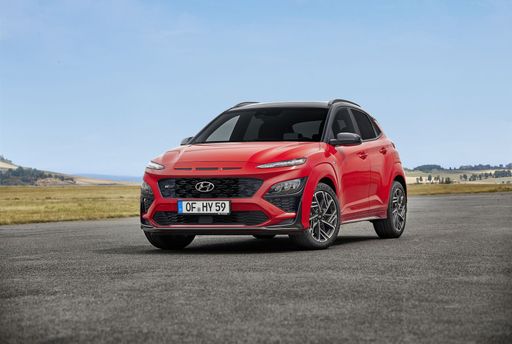 @ hyundai.news
@ hyundai.news
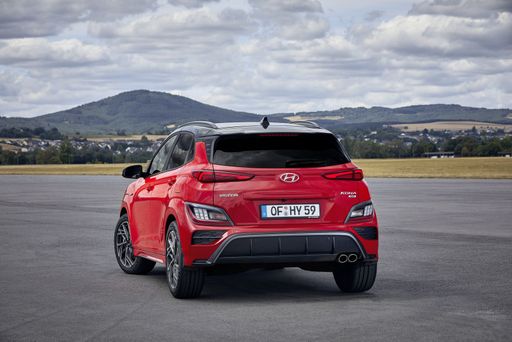 @ hyundai.news
@ hyundai.news
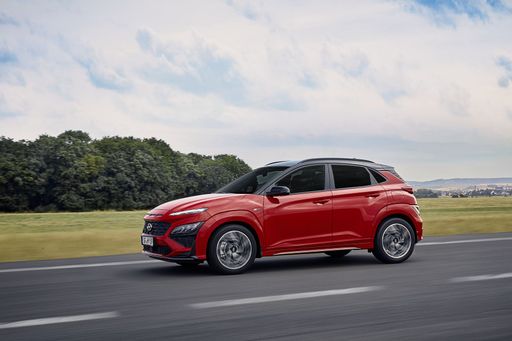 @ hyundai.news
@ hyundai.news
 @ hyundai.news
@ hyundai.news
Toyota bZ4X
The Toyota bZ4X represents a bold step forward in the brand's commitment to electric mobility, showcasing an innovative design that merges futuristic aesthetics and functionality. Inside, the spacious cabin is thoughtfully crafted to provide comfort and advanced technology, ensuring a pleasurable driving experience. With its impressive range and sustainable vision, the bZ4X sets a new benchmark for environmentally conscious driving without compromising on performance or style.
details @ Toyota
@ Toyota
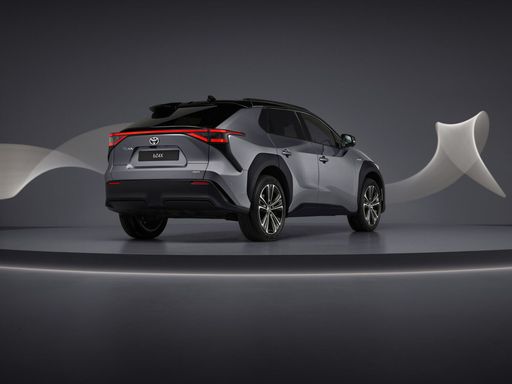 @ Toyota
@ Toyota
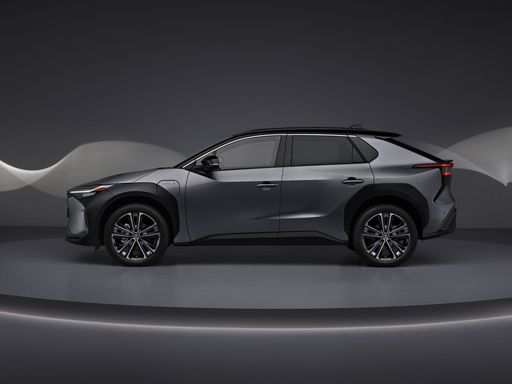 @ Toyota
@ Toyota
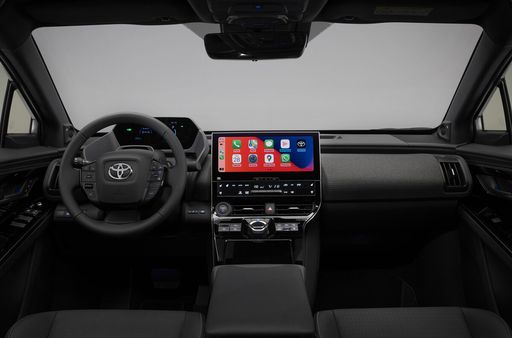 @ Toyota
@ Toyota
 @ Toyota
@ Toyota
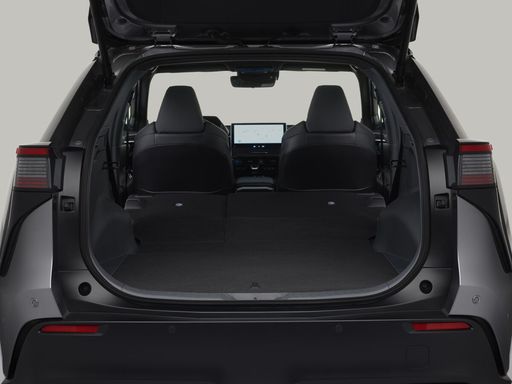 @ Toyota
@ Toyota

|

|
|
|
|
Costs and Consumption |
|
|---|---|
|
Price
23100 - 41600 £
|
Price
36800 - 48000 £
|
|
Consumption L/100km
4.6 - 7 L
|
Consumption L/100km
-
|
|
Consumption kWh/100km
14.6 - 16.8 kWh
|
Consumption kWh/100km
13.5 - 16.2 kWh
|
|
Electric Range
377 - 514 km
|
Electric Range
444 - 568 km
|
|
Battery Capacity
1.3 - 65.4 kWh
|
Battery Capacity
-
|
|
co2
0 - 163 g/km
|
co2
0 g/km
|
|
Fuel tank capacity
38 - 47 L
|
Fuel tank capacity
-
|
Dimensions and Body |
|
|---|---|
|
Body Type
SUV
|
Body Type
SUV
|
|
Seats
5
|
Seats
5
|
|
Doors
5
|
Doors
5
|
|
Curb weight
1370 - 1773 kg
|
Curb weight
1970 - 2180 kg
|
|
Trunk capacity
466 L
|
Trunk capacity
452 L
|
|
Length
4350 - 4385 mm
|
Length
4690 mm
|
|
Width
1825 mm
|
Width
1860 mm
|
|
Height
1580 - 1585 mm
|
Height
1600 - 1650 mm
|
|
Max trunk capacity
1300 L
|
Max trunk capacity
-
|
|
Payload
420 - 490 kg
|
Payload
375 - 495 kg
|
Engine and Performance |
|
|---|---|
|
Engine Type
Electric, Petrol, Full Hybrid
|
Engine Type
Electric
|
|
Transmission
Automatic, Manuel
|
Transmission
Automatic
|
|
Transmission Detail
Manual Gearbox, Dual-Clutch Automatic
|
Transmission Detail
Reduction Gearbox
|
|
Drive Type
Front-Wheel Drive, All-Wheel Drive
|
Drive Type
Front-Wheel Drive, All-Wheel Drive
|
|
Power HP
115 - 218 HP
|
Power HP
167 - 343 HP
|
|
Acceleration 0-100km/h
7.8 - 11.9 s
|
Acceleration 0-100km/h
5.1 - 8.6 s
|
|
Max Speed
162 - 210 km/h
|
Max Speed
140 - 160 km/h
|
|
Torque
200 - 265 Nm
|
Torque
265 - 338 Nm
|
|
Number of Cylinders
3 - 4
|
Number of Cylinders
-
|
|
Power kW
85 - 160 kW
|
Power kW
123 - 252 kW
|
|
Engine capacity
998 - 1598 cm3
|
Engine capacity
-
|
General |
|
|---|---|
|
Model Year
2024 - 2025
|
Model Year
2024 - 2025
|
|
CO2 Efficiency Class
A, D, C, E, F
|
CO2 Efficiency Class
A
|
|
Brand
Hyundai
|
Brand
Toyota
|
Is the Hyundai Kona offered with different drivetrains?
Available configurations include Front-Wheel Drive or All-Wheel Drive.
The prices and data displayed are estimates based on German list prices and may vary by country. This information is not legally binding.
